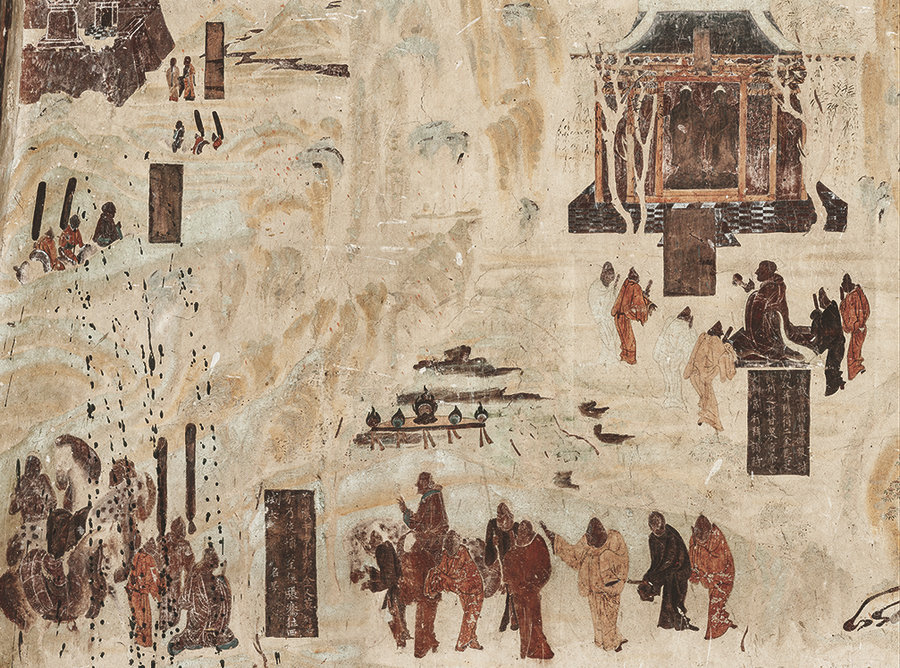Preserving the pearl of the Silk Road: Dunhuang arts digitalized
 |
|
Zhang Qian dispatched to the Western Region, north wall (Mogao Cave 323). [Photo/Chinaculture.org] |
Dunhuang is an oasis surrounded by desert and gravel in Gansu province, northwestern China. The city once was the religious and cultural gateway on the renowned Silk Road, linking China, Western Asia and the sub-continent of India. Among the sites of important Buddhist monastic complexes, the most famous one belongs to the Mogao Grottoes, where today one can see a treasure trove of Buddhist art covering a span of more than a millenium.
The Mogao Grottoes, also known as Caves of Thousand Buddhas, are homes to Buddhist artworks of unparalleled beauty. Listed by UNESCO as one of the first Chinese world cultural heritages in 1987, this site contains a total of 45,000 square meters of murals and 735 caves constructed along the cliff facing east, extending from north to south.













